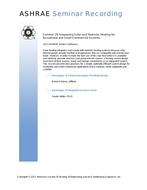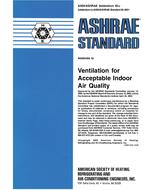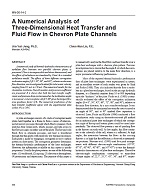Packaged unitary HVAC equipment and systems are factory-made assemblies that often provideheating and cooling to buildings all year round. Today, the steady-state full capacity energyconversion efficiencies of RTUs are typically measured by a series of figures of merit, such as theEER, SEER and HSPF, which are obtained by steady-state laboratory testing. In order to reducethe energy usage, RTUs efficiency requirements were recently increased by the U.S. Departmentof Energy (DOE). Increasing such efficiency requirements could lead to energy savings, but thereare limitations to how much steady-state efficiencies can continue to be improved and there arequestions regarding their impact on the actual energy usage when RTUs are integrated with realbuildings.
In recent years, given the critical importance of energy savings during actual field operation, anintegrated energy efficiency ratio (IEER) have been used as a single number figure of meritexpressing cooling part-load COP efficiency for unitary air-conditioning and heat pump equipment.Yet, advanced RTUs include a series of accessories, new technologies, and advanced controls thatoften improve the non-steady-state energy conversion efficiency. The associated potential energysavings are not properly characterized by steady-state temperature-controlled methods of testing.Simulation and field-testing can provide more information but computational models are difficultto calibrate and field samples are typically small. Field-testing also involves significant delayswhile waiting for full seasonal weather impacts. Thus, there is a need for developing a standard testprocedure in laboratory that can provides a figure of merit of packaged RTUs similar to the milesper gallon figure of merit used in the automotive industry.
Product Details
- Published:
- 2016
- Number of Pages:
- 167
- Units of Measure:
- Dual
- File Size:
- 1 file , 8.2 MB
- Product Code(s):
- D-RP-1608


